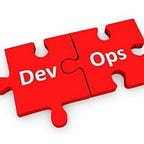How to Provision Node Labels and Selectors in Kubernetes? (K8s)
Labels selectors are core grouping primitive in Kubernetes. They are used by the users to select a set of objects. Kubernetes API currently supports two types of selectors − Equality-based selectors.
You can constrain a pod to run only on particular nodes. The recommended approach to do this is to use label selectors to make the selection.
Types of Kubernetes Selector
Following are the types of Kubernetes selector.
1. Label Selector
We apply labels to the Kubernetes objects to organize or select a group of objects. Labels can be attached at creation time or added and modified at any time.
apiVersion: v1
kind: Pod
metadata:
name: apache-web-server
labels:
env: development
app: apache-web
spec:
containers:
- name: apache
image: apache
ports:
- containerPort: 80List all the pods with labels using the below command:
kubectl get pods --show-labelsNAME READY STATUS RESTARTS AGE LABELS
apache-web 1/1 Running 0 10m env=development
You can add a label to the pod as:
kubectl label pods apache-web owner=devopskubectl get pods — show-labels
NAME READY STATUS RESTARTS AGE LABELS apache-web 1/1 Running 0 16 env=development,owner=devops
The --selector the option can be abbreviated to -l, so to select pods that are labeled with env=development, do:
kubectl get pods -l env=development
NAME READY STATUS RESTARTS AGE
apache-web 1/1 Running 0 27m2. Field Selector
Field selector is used to querying Kubernetes objects based on the value of one or more resource fields that we need to define when we create the objects.
$kubectl get pods — field-selector=metadata.name=apache-web
$kubectl get pods — field-selector=metadata.namespace=defaultThis kubectl command selects all Pods for which the value of the status.phase field is Running:kubectl get pods --field-selector status.phase=Running
3. Node Selector
The node selector is used when we have to deploy a pod or group of pods on a specific group of nodes that passed the criteria defined in the configuration file.
$kubectl label <object_type> <object_name> key=value
$kubectl label node server1 disk=hddExplanation: In the above example, rename the node ‘server1’ with the key is equal to “disk” and the value for this key is “HDD”. If the key is already assigned with a different value and want to change it then need to use the option ‘–overwrite’ as below: –
$kubectl lable node server1 disk=hdd --overwriteYaml file
---
apiVersion: v1
app: apache-web
containers:
-
name: apache
disk: hdd
env: prod
image: apache
kind: Pod
labels: ~
metadata: ~
name: apache-web-hdd
nodeSelector: ~
ports:
-
containerPort: 80
spec: ~GKE (Google Kubernetes Engine)
You can attach labels to nodes using the “kubectl label nodes” command.
List all nodes:
kubectl get nodesNAME STATUS ROLES AGE VERSIONgke-cluster-1-75a9c0b4-83dn Ready < none > 3h v1.11.6-gke.2gke-cluster-1-75a9c0b4-cgzw Ready < none > 3h v1.11.6-gke.2gke-cluster-1-75a9c0b4-rd54 Ready < none > 3h v1.11.6-gke.2
Add a label to a node:
kubectl label nodes gke-cluster-1-75a9c0b4-83dn env=prod node "gke-cluster-1-75a9c0b4-83dn" labeledYou can verify that it worked by running
kubectl get nodes --show-labelsor you can also use
kubectl describe node gke-cluster-1-75a9c0b4-83dnName: gke-cluster-1-75a9c0b4-83dnRoles: < none >Labels: beta.kubernetes.io/arch=amd64 beta.kubernetes.io/fluentd-ds-ready=true beta.kubernetes.io/instance-type=n1-standard-1 beta.kubernetes.io/os=linux cloud.google.com/gke-nodepool=default-pool cloud.google.com/gke-os-distribution=cos env=prod failure-domain.beta.kubernetes.io/region=us-central1............
Built-in node labels
In addition to the labels you attach, nodes will have a standard set of labels.
Some of the labels are:
- kubernetes.io/hostname
- failure-domain.beta.kubernetes.io/zone
- failure-domain.beta.kubernetes.io/region
- beta.kubernetes.io/instance-type
- beta.kubernetes.io/os
- beta.kubernetes.io/arch
Node Selectors
nodeSelector is the simplest recommended form of node selection constraint.
nodeSelector is a field of PodSpec. It specifies a map of key-value pairs.
Pod manifest :
---
apiVersion: v1
kind: Pod
metadata:
labels:
env: test
name: nginx
spec:
containers:
-
image: nginx
name: nginx
nodeSelector:
env: prodIf you are using workload controller for your application, you have to specify nodeSelector in pod template (spec. template. spec. nodeSelector).
---
spec:
replicas: 3
selector:
matchLabels:
app: webapp
tier: frontend
template:
metadata:
labels:
app: webapp
tier: frontend
spec:
containers:
-
image: "webapp:1.0"
name: webapp
ports:
-
containerPort: 80
nodeSelector:
env: prodenv: prod
👋 Join us today !!
If this post was helpful, please click the clap 👏 button below a few times to show your support! ⬇
